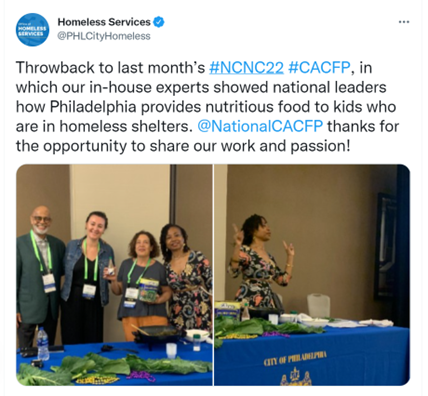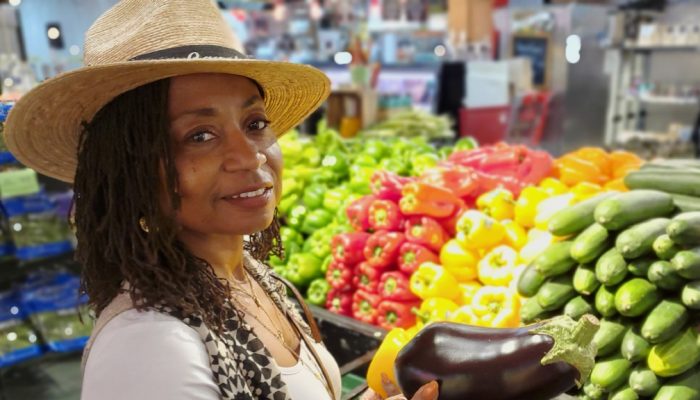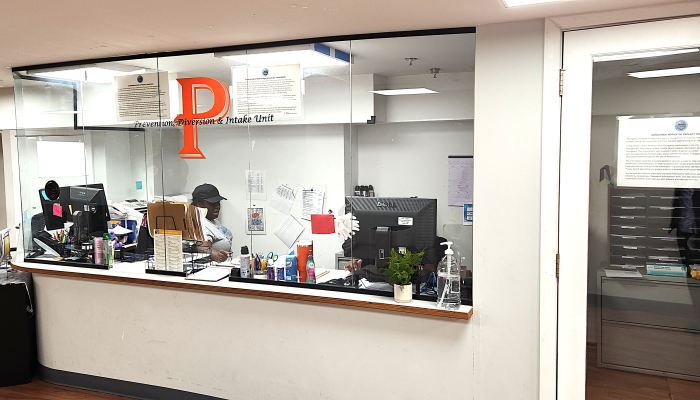This is a guest post by Trish R. Smith. She is a Program Analyst with the Philadelphia Office of Homeless Services. As part of her work with the Food Services Unit she coordinates the distribution of healthy foods in emergency shelters and across Philadelphia’s network of homeless services providers.
Summer brings a bounty of foods that rouse the senses. Think of the satisfying crunch of corn on the cob, the snap of carrots or celery, the scent of strawberries, and the lusciousness of a plump Jersey tomato. No wonder June is National Fruit and Vegetable Month!
While many Philadelphians enjoy these gifts of summer, and some take them for granted, a significant portion our population sadly misses out.
One-in-four among us resides in a “food desert” or “food swamp.” A food desert describes an area lacking access to affordable fresh produce and foods. A food swamp describes a neighborhood full of unhealthy food options, such as fast-food restaurants. There are also those among us who are unhoused, and who struggle just to find their next meal.
As part of our work at the Office of Homeless Services (OHS), we strive to increase access to food across Philadelphia – and not just to any foods. Fresh fruits and vegetables are critical to people experiencing homelessness too.
In fact, this past April we had the opportunity to show national leaders how Philadelphia provides nutritious food to kids who are staying in homeless shelters as part of the 2022 National Child Nutrition Conference in New Orleans.

It’s not easy work, and the global coronavirus pandemic made food insecurity in the US even worse. Philadelphia County was one of the worst hit, as a recent heat map from the hunger-relief organization Feeding America shows.
The good news is that in the face of hardship, Philadelphia responded. Among others, OHS organized dozens of organizations that were already doing impactful work, mobilizing to create the Anti-Hunger Coalition.
The Coalition helped feed thousands weekly during the height of the pandemic. For example, from March 2020 to March 2022, more than 3.7 million meals were served in homeless shelters. A monumental effort that continues to this day.
Food shouldn’t just be about quantity. It is also about quality and choice. The OHS warehouse distributed over 145,164 pounds of fruit and 231,563 pounds of vegetables between July 2020 and June 2021.
Everyone – regardless of their zip code or housing status – should enjoy the benefits and pleasure fruits and vegetables provide. Fortunately, Philadelphia counts several local organizations that fight food insecurity, where you can donate food and volunteer your time.
So, let’s embrace every opportunity to enjoy summer’s bounty, but also to share it with all Philadelphians!




